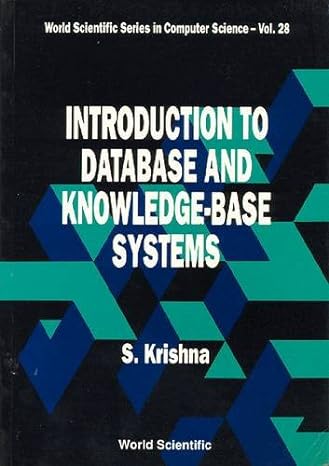Question
Question- USE PYTHON- The problem is that you do not have a function that will collect the start positions of every match between a substring
Question- USE PYTHON- The problem is that you do not have a function that will collect the start positions of every match between a substring and a string. For this solution, you will create one function named allMatchesIndices. This function will require two arguments, the string you need to search and the substring you want to find. The function shall return a tuple of the start indices of all matches.
def allMatchesIndices(srch_str, sub_str):
""" Describe what the function does, what type of information goes into the arguments, and what is returned. """
Keep in mind indices start at zero. An example of the expected output is shown below. Since the required output is a tuple, using an iterative method will probably be a far less complicated method for finding a solution.
EXPECTED OUTPUT- allMatchesIndices("atatattta", "ata")
(1,)
allMatchesIndices("atatatatta", "ata")
(0, 2, 4)
allMatchesIndices("atattatta", "Python")
()
Now you need a way to search for fuzzy matches. For this solution, your goal is to find where all but one character in a substring match by creating a function named fuzzyMatching. For example, suppose the substring is abcd. In that case, positive matches include abc*, ab*d, a*cd, and *bcd (where * represents a wild card that any character can substitute). The function fuzzyMatching has three required arguments. The first argument is a tuple of matching start positions for the first substring (the tuple output of the function you created to solve the second problem). The second required argument is a tuple of the second substring. The length of the first substring is the third argument. The function returns a tuple of start positions of all fuzzy matches.
def fuzzyMatching(subOne, subTwo):
""" Describe what the function does, what type of information goes into the arguments, and what is returned. """
This is an example of what information is sent to this function and why it's necessary. If you wanted to find the fuzzy matches with "a*cd" as the substring, then "a" and "cd" are the substrings. The tuple of the first substring can be collected by using the solution to problem two, allMatchesIndices("abcdefgabad", "a") which returns the tuple (0, 7, 9). The second substring is allMatchesIndices("abcdefgabad", "cd") which returns the tuple (2, ). The first substring's length can be collected using len("a"), which returns 1. These are the arguments for the function that solve this problem
fuzzyMatching((0, 7, 9), (2, ), len("a")) Add the length of the first substring "a" and the number of wild cards to each of the start positions in the first tuple (this would equate to 0 + 1 + 1 = 2, 7 + 1 + 1 = 9, and 9 + 1+ 1 = 11), if any of the totals are equivalent to a value found in the second tuple, then keep the corresponding value in the first tuple (in this example, since 0 + 1 + 1 = 2 and there is a 2 in the second tuple, retain the 0 from the first tuple). There is only one match (fuzzy or otherwise) in the string. The returned tuple for the example is (0,). Position zero in the string is the starting point of the only match (abcd is fuzzy matched to a*cd).
Now the solution to this program is to create a function named fuzzyMatchesOnly that only returns string matches that are not an exact match. This function has two required arguments, the string that will be searched and a substring that you want to find. The output of this function is a tuple that provides the start position of fuzzy matches where one character is incorrect. (The returned tuple will not contain the start positions of exact matches.) Considering the solutions to problems 2 and 3, you may find that you have already done most of the work to solve this problem.
def fuzzyMatchesOnly(srch_str, sub_str):
""" Describe what the function does, what type of information goes into the arguments, and what is returned. """
Testing Code Before submitting your tested solutions, ensure that you comment out all of the code you used to test your files. However, do not delete the testing code. Part of your grade is based on the testing you conduct.
Step by Step Solution
There are 3 Steps involved in it
Step: 1

Get Instant Access to Expert-Tailored Solutions
See step-by-step solutions with expert insights and AI powered tools for academic success
Step: 2

Step: 3

Ace Your Homework with AI
Get the answers you need in no time with our AI-driven, step-by-step assistance
Get Started


